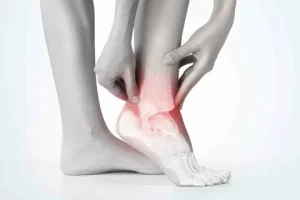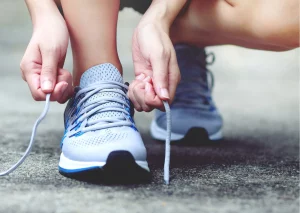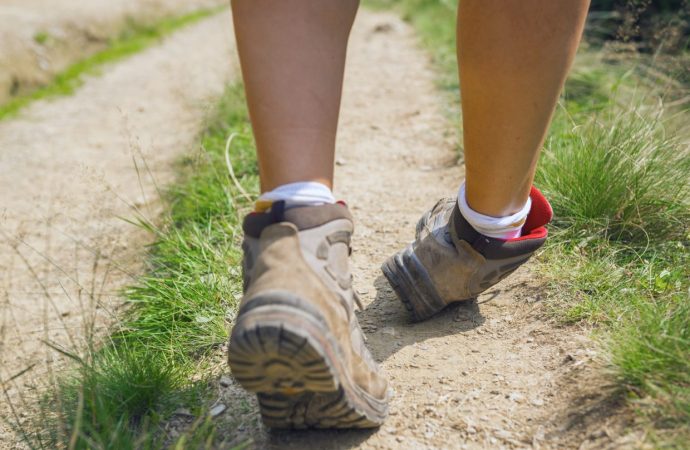Introduction Ankle sprains are a prevalent injury, affecting individuals of all ages and activity levels. Whether you’re an athlete or someone who enjoys recreational activities, understanding how to prevent ankle sprains is crucial for maintaining optimal mobility and well-being. In this comprehensive guide, we’ll explore essential strategies to master ankle safety and reduce the risk
Introduction
Ankle sprains are a prevalent injury, affecting individuals of all ages and activity levels. Whether you’re an athlete or someone who enjoys recreational activities, understanding how to prevent ankle sprains is crucial for maintaining optimal mobility and well-being. In this comprehensive guide, we’ll explore essential strategies to master ankle safety and reduce the risk of sprains.
Understanding Ankle Sprains
An ankle sprain occurs when the ligaments supporting the ankle joint are stretched or torn, typically due to sudden twisting or rolling movements. This can lead to pain, swelling, and instability, affecting your ability to walk, run, or engage in physical activities.
Recognizing the Risk Factors
Certain factors increase the likelihood of experiencing an ankle sprain:
- Previous Injuries: Individuals with a history of ankle sprains are more susceptible to future incidents.
- Inadequate Footwear: Wearing improper or unsupportive footwear can contribute to instability and increase the risk of injury.
- Poor Conditioning: Weak muscles and lack of flexibility can make ankles more prone to sprains.
- Terrain: Uneven surfaces or obstacles can pose a greater risk, especially during physical activities.

Image by: yendex.com
Preventive Measures for Ankle Safety
Preventing ankle sprains involves a combination of strengthening exercises, proper footwear, and injury prevention strategies. Let’s delve into specific strategies to protect your ankles:
1. Proper Warm-Up and Stretching
Before engaging in any physical activity, it’s crucial to perform a thorough warm-up routine to prepare your muscles and ligaments for movement. Incorporate dynamic stretching exercises that target the calves, Achilles tendon, and ankle joints to improve flexibility and reduce the risk of strain.
2. Strengthening Exercises
Building strength in the muscles surrounding the ankle joint can provide added stability and support, reducing the likelihood of sprains. Incorporate exercises such as calf raises, ankle circles, and resistance band exercises into your fitness routine to strengthen the ankle muscles and improve overall stability.
3. Wear Supportive Footwear
Invest in high-quality athletic shoes that offer adequate support and cushioning for the feet and ankles. Look for shoes with reinforced ankle support and a snug fit to minimize the risk of injury during physical activities. Additionally, consider using orthotic inserts or custom-made orthotics for added support and stability.

Image by: yendex.com
4. Balance and Proprioception Training
Improving balance and proprioception, which is the body’s awareness of its position in space, can enhance ankle stability and reduce the risk of sprains. Incorporate balance exercises into your routine, such as standing on one leg, using a balance board, or performing stability drills, to improve proprioceptive awareness and prevent ankle injuries.
5. Avoid Overexertion
Listen to your body and avoid pushing yourself beyond your limits, especially when you’re fatigued or experiencing discomfort. Overexertion can lead to poor form and increased vulnerability to injury, so prioritize rest and recovery as part of your training regimen to prevent ankle sprains.
Responding to Ankle Injuries
Despite taking preventive measures, ankle sprains can still occur. Knowing how to respond promptly and effectively can aid in the healing process and prevent further complications. Explore More About (Fatty Liver and its Solutions)
R.I.C.E Protocol
The R.I.C.E protocol is a common approach for managing ankle sprains:
- Rest: Avoid putting weight on the injured ankle and refrain from activities that exacerbate pain.
- Ice: Apply ice packs to the affected area for 15-20 minutes every few hours to reduce swelling and alleviate pain.
- Compression: Use a compression bandage to provide support and minimize swelling.
- Elevation: Elevate the injured ankle above heart level to reduce swelling and promote circulation.
Seeking Medical Attention
If the pain or swelling persists despite home remedies, or if you suspect a severe injury such as a fracture, seek medical attention promptly. A healthcare professional can assess the extent of the injury and recommend appropriate treatment, which may include physical therapy or immobilization with a brace or cast.

Image by: www. arabian business.com
Preventive Measures for Ankle Safety
To provide a clear overview of preventive measures for ankle safety, let’s compare different strategies in a comprehensive table:
| Preventive Measure | Description |
|---|---|
| Proper Warm-Up and Stretching | Dynamic stretching exercises to prepare muscles and ligaments for movement. |
| Strengthening Exercises | Targeting muscles surrounding the ankle joint to improve stability and support. |
| Wear Supportive Footwear | Investing in high-quality athletic shoes with reinforced ankle support and cushioning. |
| Balance and Proprioception Training | Improving balance and proprioceptive awareness through specific exercises and drills. |
| Avoid Overexertion | Listening to your body and avoiding pushing beyond limits to prevent overuse injuries. |
Conclusion
Ankle safety is essential for maintaining an active lifestyle and preventing debilitating injuries such as sprains. By incorporating preventive measures such as proper warm-up, strengthening exercises, and wearing supportive footwear, you can reduce the risk of ankle sprains and enjoy physical activities with confidence. Remember to listen to your body, respond promptly to injuries, and seek professional medical advice when necessary to ensure optimal recovery and long-term ankle health.
















